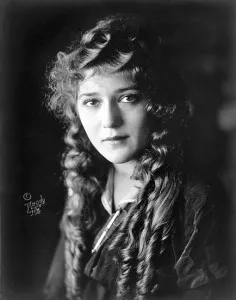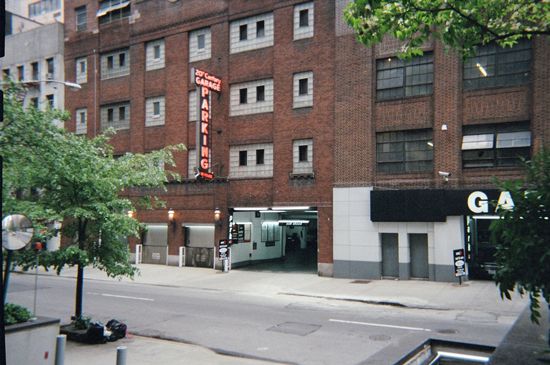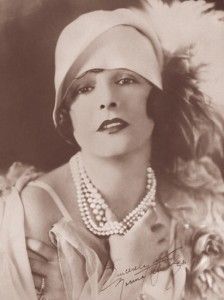Historic Film Studios Gone, but Not Forgotten
The demolition of buildings in West Hollywood and New York City leads us to ask: “What parts of our film heritage are we going to keep?”
/https://tf-cmsv2-smithsonianmag-media.s3.amazonaws.com/filer/c9/81/c98172c8-0955-4063-a139-e8bd1b9d820d/the-lot-550w.jpg)
Many film fans first heard the news in a Los Angeles Times article by Bob Pool, “Storied West Hollywood studio buildings to be demolished.” “The Lot,” a movie studio complex with sound stages and editing rooms, will be demolished by its new owner, CIM Group. As Pool wrote,
The first phase of work involves the demolition of the studio’s Pickford Building—built in 1927 and remodeled in 1936—and Goldwyn Building, which was built in 1932 and is used for sound editing. Later phases will involve the removal of the studio’s Writers Building, Fairbanks Building and Editorial Building and a block-long row of production offices that line Santa Monica Boulevard. Replacement buildings will rise to six stories.
The story spread quickly to LAist (“Historic West Hollywood Studio Lot Will Soon Meet The Wrecking Ball“), The Cinementals (“Save The Pickford-Fairbanks Studios!“), Hollywood Patch (“Developer Plans to Demolish The Lot, Rebuild Studio Buildings“) and other sites. A Save Pickfair Studios! petition went up on Care2, and filmmaker Allison Anders and historians Hala Pickford and Sal Soul-Pilot Gomez formed Save the Pickfair Studios!
A studio existed on the site since Jesse Durham Hampton began construction in 1917. In 1919, four of the movie industry’s most important figures—D.W. Griffith, Charlie Chaplin, Douglas Fairbanks, and Mary Pickford—formed United Artists, prompting the comment from a rival executive that, “The inmates are taking over the asylum.” Griffith and Chaplin had their own studios, but Fairbanks and Pickford needed a place to work, and renovated the Hampton site.

Their complex has been known by many names, including the Pickford-Fairbanks Studio, the Pickfair Studio, United Artists Studios, the Samuel Goldwyn Studio, Warner Hollywood Studios, and most recently as simply The Lot. Just about every significant name in the motion picture industry worked there at one time or another: Clark Gable, Marilyn Monroe, Elizabeth Taylor, Marlon Brando. Movies made there (in whole or in part) include Wuthering Heights (1939), Some Like It Hot (1959), West Side Story (1959), and the cantina scenes in Star Wars (1977).
The loss of such a facility would be a significant blow to our cultural heritage, one of the reasons why petition efforts have attracted members of the Fairbanks family as well as filmmakers Guy Maddin, Joe Dante, and Nancy Savoca; actors Gabriel Byrne, Tony Shalhoub, and Rosanna Arquette; critics Roger Ebert and David Ansen; and Antoine de Cazotte, an executive producer of The Artist. But as Hollywood Heritage points out,
This is a case which stretches back a number of years and received approval at that time for the scope of work then submitted. The original development plan was approved in 1993. In 2006, the City of West Hollywood issued a Supplemental Environmental Impact Report (EIR) for a revised development plan, focusing on the project’s impacts on historic resources.
Both the Los Angeles Conservancy and Hollywood Heritage testified at the Planning Commission and the City Council hearings, focusing on the Supplemental EIR’s failure to consider alternatives to demolition. In May 2007, the West Hollywood City Council approved a revised development plan that included the demolition of some, but not all of the buildings at the site.
In other words, not all of the studio site will disappear. Some of the historical buildings will remain. As noted on Nitrateville.com, the demolition plans were approved more than five years ago. Protests against them should have occurred then.
By coincidence, the Mary Pickford Institute for Film Education announced on March 27 that it had lost funding from the Mary Pickford Institute, a charitable trust founded by the actress. Ironically, the coming months will see the release of several Pickford features from Milestone Films, which currently offers Rags to Riches: The Mary Pickford Collection for institutional sale.

In researching this story, I was surprised to learn from film buff Greta de Groat of another studio loss, this one in New York City. As film historian Paul Gierucki informed me, 318 East 48th Street was originally built as a warehouse before it was purchased by Joseph Schenck and converted into a multi-level film studio. It housed the Norma Talmadge Film Corporation, the Constance Talmadge Film Corporation and Roscoe Arbuckle’s Comique Film Corporation. The sisters Norma and Constance Talmadge were two of the most popular movie stars of the 1920s. Norma started out at Vitagraph, where she worked with comedian John Bunny, moved to Triangle Pictures under D.W. Griffith, then formed her own company when she married Schenck. Constance also started at Vitagraph, had an important role in Griffith’s Intolerance, and specialized in comedies, many of them written by her friend Anita Loos.
Roscoe Arbuckle, probably better known by his screen nickname Fatty, worked on the third floor of the building. It was here that he introduced Buster Keaton to moviemaking in the slapstick short, "The Butcher Boy," the start of their prolific and creative partnership. Keaton’s first job was to get hit in the face with a sack of flour. As he wrote later, “I said, ‘How am I gonna keep from flinching?’ He said, ‘Look away from me. When I say turn, it’ll be there.’ He put my head where my feet were!”

Arbuckle and Keaton made six films at the 48th Street studio before moving to the Balboa Studios in Long Beach. The Talmadges remained at their studios until 1922, when they moved to California. (Keaton would later marry a third Talmadge sister, Natalie.) Gierucki believes that Lewis Selznick (father of Gone With the Wind producer David O. Selznick) may have controlled the studios for a while, but the building was converted at some point into a parking garage. (For more information on the Talmadges, visit de Groat’s first-rate Norma Talmadge Website.)
Film historian Ed Watz found an undated news release online with this information: “The Republic of Singapore has purchased 318 East 48th St., a 45,000 s/f garage that will be converted to a UN Mission. The sale price was $29.5 million…Singapore will reconfigure the building to house its Mission to the U.N.”
As Gierucki wrote, “Unfortunately, the word “reconfigure” was a bit of an understatement. Not a single thing remains. Another critical link to our motion picture past has been lost forever.”
Thanks to Paul Gierucki, Greta de Groat, and Ben Model for help with this post.
Read Reel Culture posts every Wednesday and Friday. And you can follow me on Twitter @Film_Legacy
/https://tf-cmsv2-smithsonianmag-media.s3.amazonaws.com/accounts/headshot/daniel-eagan-240.jpg)
/https://tf-cmsv2-smithsonianmag-media.s3.amazonaws.com/accounts/headshot/daniel-eagan-240.jpg)